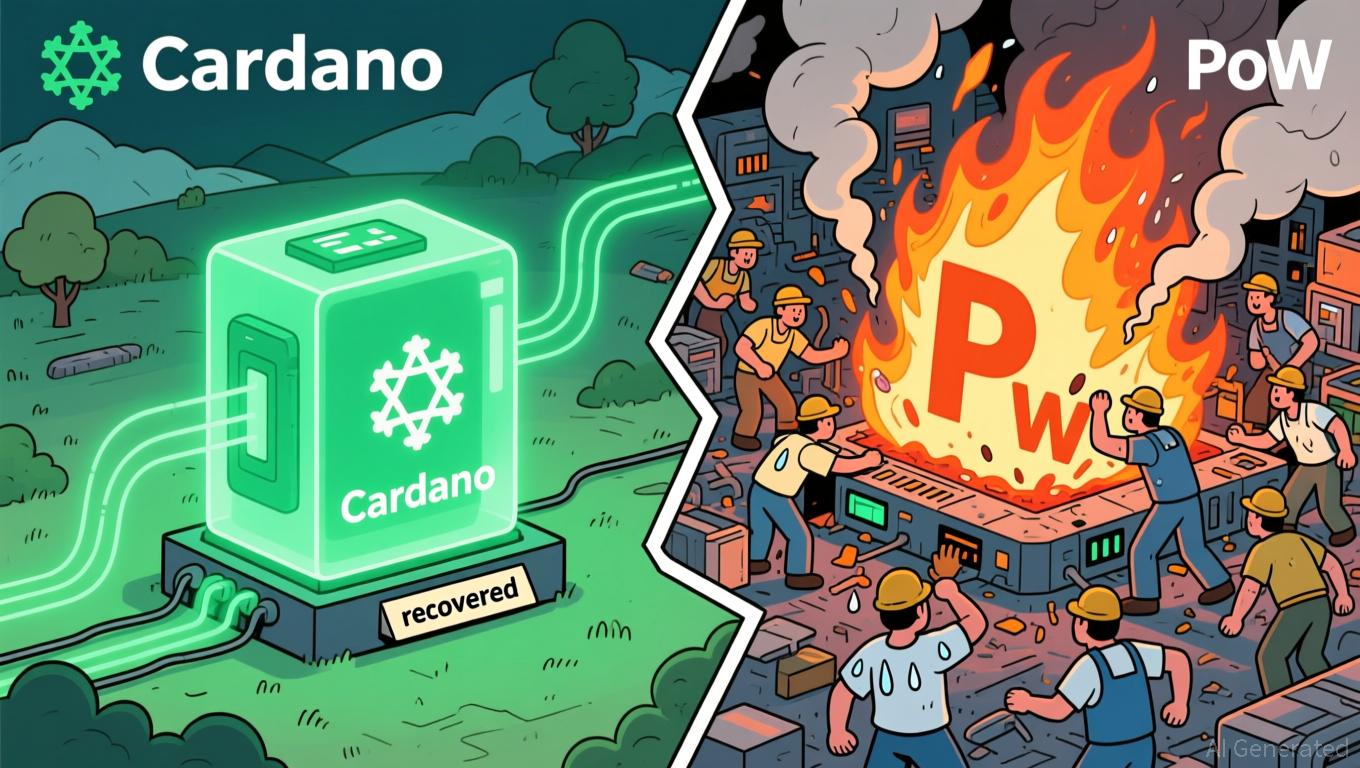Zcash (ZEC) Halving Scheduled for November 2025: Driving Market Outlook and Influencing Price Trends
- Zcash's 2025 halving cut block rewards by 50%, reducing daily supply to 1,800 ZEC and boosting institutional interest. - Arthur Hayes urged ZEC holders to shift funds to shielded pools, reducing liquidity amid EU AML pressures. - Cypherpunk and Grayscale's $137M investments, plus Zashi Wallet's launch, expanded Zcash's institutional and privacy-driven appeal. - ZEC surged to $750 post-halving, fueled by $108M in treasury investments and 104% growth in futures trading volume. - U.S. regulatory clarity and
Supply Limitations and Privacy-Driven Liquidity Trends
The halving’s immediate effects were intensified when Arthur Hayes encouraged Zcash users to transfer their coins from centralized exchanges to shielded addresses,

Institutional Involvement and Product Development
Zcash’s attractiveness has grown further due to increased institutional participation and new product launches. For example, Cypherpunk Technologies
Market Outlook and Price Drivers
Following the halving, Zcash’s price movement has mirrored strong investor sentiment. After dipping to $420 in early November, ZEC climbed to $750 before settling around $673 by November 15, 2025
Regulatory Developments and Long-Term Prospects
Zcash’s success in addressing regulatory hurdles has played a vital role in its post-halving progress.
Conclusion
The Zcash halving in November 2025 has triggered a mix of supply restrictions, greater institutional involvement, and regulatory adaptability, making a strong case for Zcash as a privacy-focused investment. Although short-term liquidity changes and the EU’s AML rules in 2027 present challenges, ongoing technological improvements and increasing institutional support point to a positive outlook. For investors, Zcash’s distinctive balance of privacy and regulatory compliance offers a strategic advantage in the increasingly complex crypto landscape.
Disclaimer: The content of this article solely reflects the author's opinion and does not represent the platform in any capacity. This article is not intended to serve as a reference for making investment decisions.
You may also like
XRP News Today: XRP ETF Investments See $4 Billion Influx Amid Price Drop: Market Adjusts After Recent Surge
- Ripple's XRP ETFs see $128M inflows and regulatory approvals, but prices drop amid market correction. - XRPI and XRPR ETFs fall 8%, while XRPC ETF generates $58.5M in first-day trading, surpassing Solana's debut. - SEC approvals confirm XRP's commodity status, boosting institutional confidence as nine new XRP ETFs target $4B–$8B inflows. - Technical analysis shows XRP-USD above $2.00, with analysts projecting $2.50 by late 2025 if ETF AUM exceeds $8B.

San Francisco Hotel Promotions and Autonomous Taxis Indicate Economic Recovery
- San Francisco's hotel market shows recovery as Newbond and Conversant buy two iconic hotels for $408M, signaling investor confidence amid rising convention bookings. - Tech innovation accelerates with Amazon's Zoox launching free robotaxi trials, competing with Waymo and Tesla in autonomous vehicle testing. - Deutsche Bank raises capital via a 7.125% AT1 bond and revises ESG targets to include 900B€ in transition finance by 2030, reflecting industry decarbonization trends.

TWT's Revamped Tokenomics: Redefining Value for Holders and Ensuring Long-Term Project Viability
- TWT rebranded as Toncoin in 2025, shifting to gamified utility via Trust Premium, emphasizing user engagement and gas discounts. - A 2020 token burn reduced supply by 40%, but liquidity risks persist due to pre-burn circulation and centralized utility dependencies. - Lessons from TNSR's collapse highlight the need for decentralized use cases, as TWT's value relies on recurring incentives and cross-chain liquidity. - Analysts project TWT could reach $15 by 2030, contingent on sustained adoption and addres

Cardano News Today: Blockchain Dispute: Should Those Responsible for Chain Splits Face Legal Action or Should Open-Source Creativity Be Safeguarded?
- Solana co-founder Anatoly Yakovenko praised Cardano's swift recovery from a November 2025 chain split, calling its resilience "pretty cool" despite a malicious transaction exploiting a deserialization bug. - Cardano's Ouroboros consensus model enabled rapid convergence without hard forks, preserving transaction throughput and avoiding fund losses through emergency node upgrades. - A public debate emerged between Yakovenko and Cardano founder Charles Hoskinson over legal accountability, with Hoskinson adv
